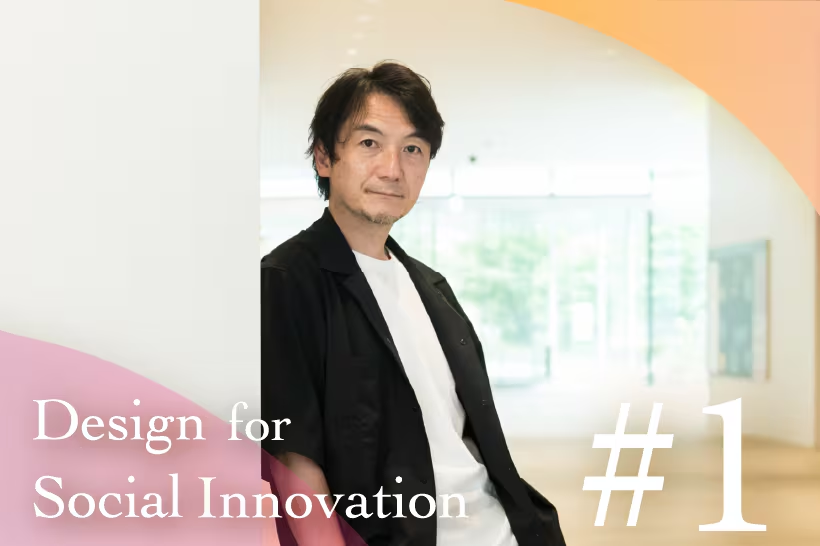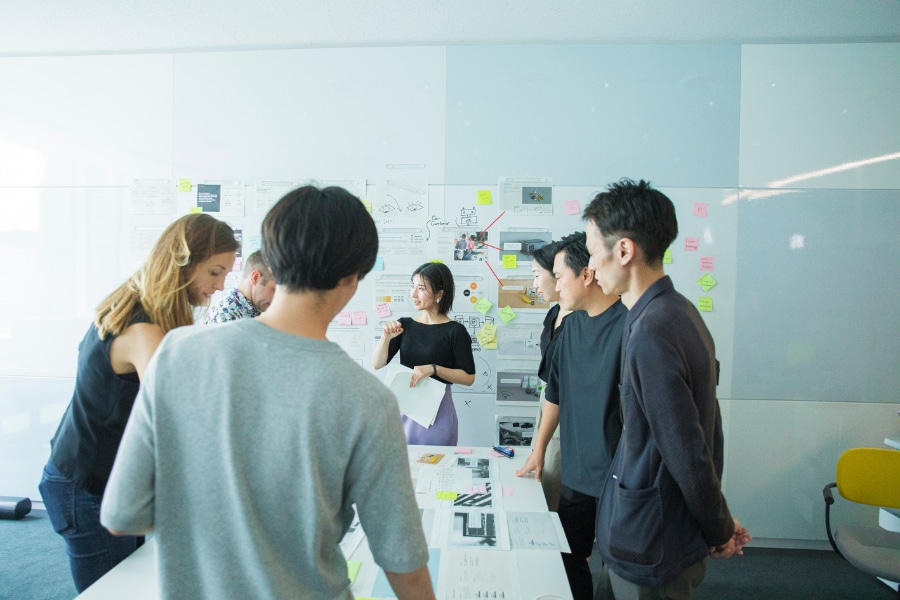Hitachi has unveiled the next generation of the OASIS™
Working Hand in Glove with Technology

Passing on the skills of experienced workers to the next generation has long been a challenge for manufacturers.
To solve this problem, a team at Hitachi R&D is developing a glove called “FREEDi”. The glove uses multiple built-in sensors to monitor the movement, finger pressure and noises when a worker grips an object. We interviewed Naoko Ushio, a designer in the R&D group developing the glove.
Development starting from the discovery of a problem at the factory

--How did you become a designer?
Ushio: I’ve wanted to be a designer since school. I majored in graphic design in high school and then business design in college. One of my professors told me that “Design for the public sector can improve society.” This inspired me to join Hitachi, a company that also works to solve issues in the public sector. Over the past 10 years, I ‘ve designed in a variety of fields, including finance and medicine, focusing on UI design (User-Interface design - which is designing services and products to be easy for users to use) such as screen design for business IT systems.

The "FREEDi" project falls under the category of "service design," so it was a bit different to the projects I have worked on previously in my career.
--What kind of solution is “FREEDi”?
Ushio: Basically, it’s a work glove fitted with sensors. In many factories, processes such as product assembly and inspection are still performed by hand. FREEDi enables the movements of workers’ hands to be recorded and digitized. This data can then be used to reduce losses due to work mistakes and to pass skills on to the next generation.

--How did the development of this product come about?
Ushio: The FREEDi project began in response to frequent installation failures of electrical connectors at an assembly factory in the manufacturing industry. The factory had been trying to detect defective installation using cameras and other methods, but they couldn’t get it to work satisfactorily. So in 2017, a team of Hitachi researchers and designers began the development of a glove that can detect detailed hand movements. It was based on combining data from multiple sensors. When I joined the project in 2019, a prototype of the sensor glove and the core technology already existed. My role as a designer was to fully understand the users’ perspective and develop the glove into something that the users would really appreciate.
--How did you move the project forward?
Ushio: Since we were a small team of four (the project owner, two researchers, and me), we were able to work in parallel. For example, while the researchers were designing the electronic circuit board inside the glove, I was creating paper patterns for the glove and making prototypes.

From a design standpoint, it was very important to make sure that the product was suitable for actual work. We started by studying how work was performed on-site.
We took our prototype to a factory, had people working on-site wear it, and then we analyzed the data. At the same time, we surveyed workers at the factory about the usability of the glove and the durability that they required.
The workers requested things such as “I want the fabric to be thinner because it’s hard to move my fingers,” “I want the fingertips not to slip,” and “I want the gloves to be breathable, so they are comfortable for long shifts.” Based on these requests, we made improvements.
For me, it’s not just about drawing up a design. It’s the entire process from initial design to creating a working prototype, and then testing and evaluating it in the field… I found it all very interesting and rewarding.

Embracing agile development in collaboration with researchers
--What was the reaction from those around you?
Ushio: At first, it was difficult to get people to understand what we were trying to achieve with this project. However, the name “FREEDi,” an acronym for “FREE your Data input” (to mean freeing customers from the hassle of daily data inputting), became a turning point as it raised awareness of the project both inside and outside the company, and it also clarified the team's goals.
Also, after about two years of refining prototypes, we revealed the technology externally in 2020. The response was positive and we received some requests, such as, “We want to detect faulty installation of parts other than connectors,” and “We want to use this technology to train workers,” which gave us a renewed sense of purpose, and based on these responses, we are continuing further development of FREEDi.
--What difficulties did you face with the design?
Ushio: I struggled to increase versatility so that the gloves could be used at various manufacturing sites. For example, development originally started as a right-hand glove, but we found a left-hand version was also needed. During the development process, we also learned that there was a need for a fluorescent version of the glove, so that the glove itself could be detected by video.

We received many requests from workers, all of which were valuable, but incorporating all of them would require dozens of different types of gloves. Since we were trying to create a general-purpose product, not a custom-made product, we had to make some tough choices. The step of carefully examining which requests to incorporate in terms of how they could be useful to a range of manufacturing sites was extremely difficult, but at the same time, I found it very rewarding.
--Did your involvement in the FREEDi project change your view of work as a designer?
Ushio: Good question. First of all, in the UI design work that I was involved in before FREEDi, there was a clear separation between creating a design to meet a set of pre-determined requirements, and the subsequent development phase. In the FREEDi project, on the other hand, I personally went to work sites with the researchers to identify issues and conceive new specifications for the glove and app screens.
The process of working alongside the researchers to immediately reflect their ideas in the design and to make continual revisions through repeated testing and validation is a technique known as “agile development.” The speed at which we were able to improve and upgrade the prototypes in a short period of time was a very valuable experience for me.
I’ll definitely use this experience in my future work and approach to manufacturing and design.
What do you consider to be “superior design”?
Ushio: Design that stems from understanding what the users really need, not just what they want. I believe that it is of utmost importance for designers to put themselves in the customers’ shoes.
Wherever possible, I visit the work site. But if that’s not possible, I extensively interview people from the site, and then I study and verify the workflow and processes. I believe that by collecting this information and understanding it, we can achieve good design.
Another important aspect of the job is to visualize the ideas and innovative technologies devised by our researchers in a way that can be easily understood and appreciated. As a Hitachi designer, I will continue to work closely with our researchers and focus on turning their inventions into new products that users will try and say, “Wow, that is just what I needed!”
* FREEDi is a registered trademark in Japan.



